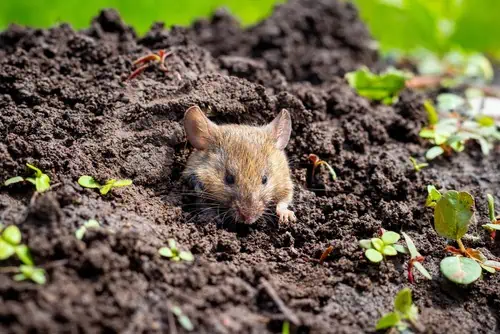Key Takeaways
- Understand why rodent-proofing is essential for home maintenance.
- Learn practical tips to prevent rodent infestations.
- Explore the environmental impact of preventing rodent infestations.
- Discover long-term solutions for a rodent-free home.
Why Rodent-Proofing Matters
Keeping your home free from rodents is not merely about maintaining aesthetics; it’s crucial to safeguarding your property and health. Rodents can cause chaos, gnawing through electrical wires, insulation, and structural elements. It may result in expensive repairs and, in the worst cases, dangerous electrical fires. Physical damage aside, these pests also bring health risks. They are notorious carriers of pathogens, capable of spreading diseases such as leptospirosis and the plague (the same one from medieval times). In essence, rodent infestations aren’t just a nuisance but a potential hazard. Understanding their risks is the first step toward effective prevention if you’re concerned about rodent proofing your property. From an economic perspective, underestimating the cost of repairing rodent-related damage and executing pest control measures can strain any household budget. Even minor infestations can lead to significant financial setbacks without prompt and effective intervention. Rodent infestations don’t just affect property; they have severe health implications, making prevention a critical measure.
Identifying Vulnerable Areas in Your Home
Your home’s vulnerabilities can be elusive, but knowing where to look gives you the upper hand against rodent invasions. Start with a comprehensive assessment of your property’s borders. Rodents can fit through surprisingly tiny gaps, so check for gaps where walls meet foundations, nooks around utility pipes, and the small crevices in brickwork or siding. Armed with a flashlight and a mirror, scrutinize the less obvious spots that might go unnoticed. Don’t forget attics and basements, as these areas are common nesting grounds due to their relative obscurity and warmth. The search should also examine door frames and window sills, which might develop cracks over time, becoming inviting entry points for rodents seeking a warm refuge. As you inspect, take note of areas that lack reinforcement, as these will need immediate attention to protect against future intrusions.
Practical Prevention Techniques
After identifying possible entry points, the following step is to close them off effectively. Use steel wool, which is challenging for rodents to chew through, and combine it with caulk for smaller gaps. Metal mesh or hardware cloth can be incredibly effective for more substantial openings around pipes or vents. Weatherproofing doors and windows is equally crucial; install sweeps on external doors and ensure window seals are intact. Inside your home, focus on food storage. Rodents are opportunistic feeders, so securing edibles in airtight containers is vital. Keep storage areas like pantries and kitchen cabinets organized and free from crumbs or spills. Regularly check stored foods for chew marks or droppings, and maintain hygiene to avoid inadvertently offering a food supply to these pests.
Role of Proper Waste Management
Effective waste management can drastically reduce the likelihood of a rodent problem. Dispose of garbage systematically—don’t let it accumulate indoors or out. Consider integrating composting into your waste routine, keeping the bin away from your house and well-covered to avoid attracting pests. The decomposition process can emit odors that appeal to rodents, so turning and managing compost correctly is essential. Furthermore, invest in robust, tightly sealed trash bins to store waste before disposal. Ensure they are kept closed and, if possible, store them securely to prevent rodents from treating your trash as a buffet.
Yard Maintenance Tips to Deter Rodents
Your yard can serve as the first line of defense against rodent infestations. Regular maintenance is key; trim grass and bushes, and ensure trees and shrubbery don’t provide easy access to your home. Rodents are excellent climbers, so branches near or touching the building can become pathways inviting them indoors.
Beyond vegetation management, consider placing and managing bird feeders and pet food bowls. Position bird feeders strategically, and opt for ones designed to minimize spillage. Similarly, feed pets indoors and clean up any leftovers promptly to deny rodents an easy food source. Clear away piles of wood or debris that could serve as a shelter, particularly near your house.
Using Natural Repellents
Natural repellents offer an eco-friendly way to discourage rodent invaders. Standard options include essential oils like peppermint, eucalyptus, and citronella, whose potent scents can deter rodents. Use these oils on cotton balls and position them strategically around your home in common mouse entry points and nesting areas. You might also use crushed spicy peppers or cocoa shells as barriers along the edges of rooms or gardens. Before applying these natural deterrents, investigate the Environmental Protection Agency’s guide on safe and effective pest control practices. They offer valuable insights into incorporating non-toxic methods without compromising the ecosystem or the safety of your living space.
Understanding the Environmental Impact
Addressing rodent issues with non-toxic measures benefits your home and supports a healthier environment. Reducing reliance on chemical pesticides contributes to ecological balance, ensuring non-target species and beneficial insects can thrive. Adopting sustainable pest prevention methods is an educational model within your community, promoting awareness and responsible stewardship. The long-term environmental benefits extend beyond your immediate surroundings, fostering biodiversity and lessening the chemical load in natural water systems. By preventing infestations with eco-friendly approaches, you endorse a cleaner and greener planet.
When to Call a Professional
While many rodent-proofing steps can be tackled independently, involving a professional pest control service becomes necessary when signs of infestation persist despite your best efforts. Look for recurring noises in walls, extensive gnaw marks, or droppings that suggest a significant rat or mouse presence.
When selecting a pest control service, prioritize companies that integrate environmentally friendly treatments into their regimen. Balancing professional services with DIY preventative measures often yields the most comprehensive results, ensuring your home remains rodent-free while respecting the environment.

